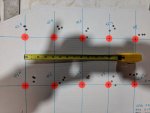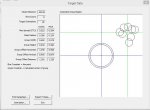I received a reloading setup for Christmas and loaded 30 rounds with Varget and 175gr Hornady BTHP. Went out today and shot an OCW. I think I know what I am looking at forresults but would like some input on where you would start for load development and fine tuning. Worked up from 42.5 gr to 45gr. My next outing I was planing on Loading 5 rounds each starting at 44.4 up to 45 grains.
Where would you look and what would your next steps be keeping in mind I don't have a chrono yet.
Your input and help is appreciated.
If it helps this was shot with the .308 RPR loaded to max mag length 2.810 once fired FGMM brass and FGM primers. Neck was bumped .0015
Thank you in advance
Where would you look and what would your next steps be keeping in mind I don't have a chrono yet.
Your input and help is appreciated.
If it helps this was shot with the .308 RPR loaded to max mag length 2.810 once fired FGMM brass and FGM primers. Neck was bumped .0015
Thank you in advance



